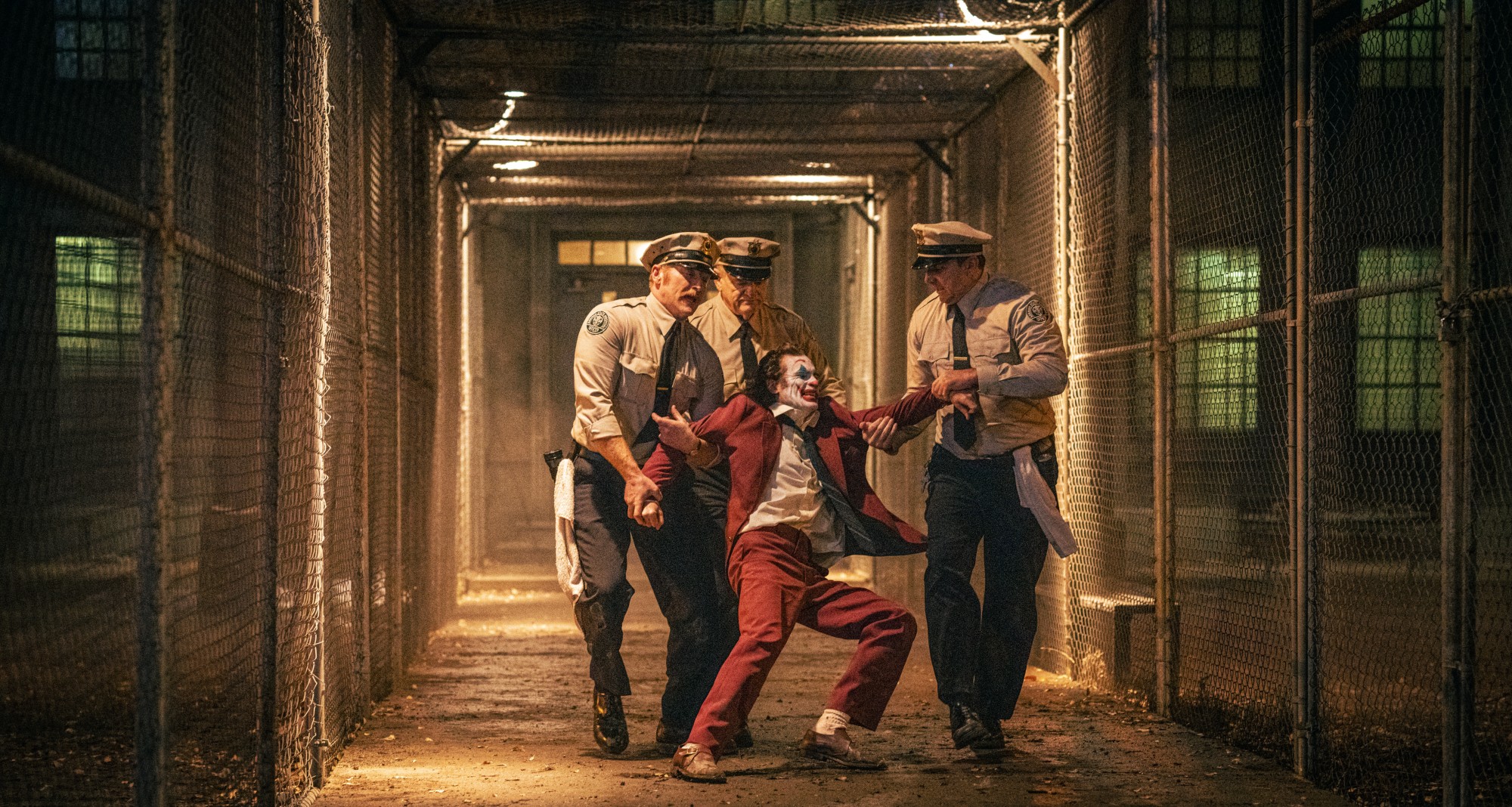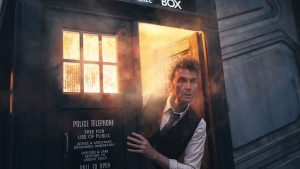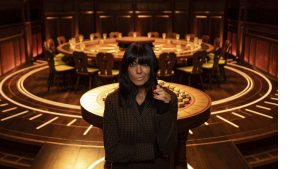
This Joker: Folie a Deux article contains spoilers.
Todd Phillips is once again putting on a happy face, and Joaquin Phoenix is back in his baggy pants for Joker: Folie à Deux. Set in their own continuity away from Matt Reeves’ The Batman and the Colin Farrell-led The Penguin, 2019’s Joker and 2024’s Folie à Deux have shied away from setting up this world’s Caped Crusader and his infamous rogues gallery. Still, with the Joker being Batman’s most iconic nemesis, Folie à Deux gives a major hint at where the story could’ve gone if Phillips stayed in this world.
The original Joker’s fleeting glimpse of a young Bruce Wayne (Dante Pereira-Olson) had fans questioning the age difference between the future Batman and his potential Joker, leading to theories that Joker is just a mantle worn by any number of unhinged madmen (similar to the way James Bond is just a code name theory). In fact, it was something Phillips alluded to in a 2019 interview with the LA Times, explaining, “Maybe Joaquin’s character inspired the Joker. You don’t really know. His last line in the movie is, ‘You wouldn’t get it.’ There’s a lot going on in there that’s interesting.”
Joker: Folie à Deux seemingly returns to this idea with its shock ending, sparking plenty of fresh theories that we only get to see the “real” Joker right before the final credits roll. During Fleck’s incarceration at Arkham State Hospital, there are several close-up shots of a character who is simply credited as Young Inmate (played by Connor Storrie). After asking Fleck if he wants to hear a joke, the inmate puts a spin on Joker’s “You get what you deserve” line and brutally stabs Arthur before carving a smile into his own face. Those up on their Joker lore will know the image of a scarred clown has become synonymous with modern interpretations of the character.
Following the success of Heath Ledger’s scarred Joker in The Dark Knight, we’ve seen the likes of Earth-3’s ‘Jokester’ and Gotham’s Jerome Valeska (Cameron Monaghan) sport a carved smile. It feels like Folie à Deux is the latest to give a nod to Ledger’s iconic take on the character. The reference even plays into the ambiguity of the Joker’s origin. Christopher Nolan’s 2008 movie shied away from giving us a concrete Joker origin story, instead teasing audiences with the ever-changing “Wanna know how I got these scars?” story—which was a reference itself to the Clown’s “multiple choice” line in Alan Moore and Brian Bolland’s The Killing Joke. It’s an aspect of the character that truly makes him so intriguingly unknowable. With the first Joker, Phillips presents us with one possible origin story, while in the final minutes of the sequel, here is another possibility.
Of course, the internet has quickly come up with its own (misguided) theories, suggesting that, because Storrie’s likeness in the film resembles a young Heath Ledger, Joker: Folie a Deux is directly connected to Nolan’s seminal Bat-film. But at this point, it feels like fandom is living in its own folie à deux (shared delusion).
The Dark Knight is regarded as one of the greatest comic book movies of all time, while the tragic passing of Heath Ledger in 2008 meant any plans to include him in Nolan’s third movie were retired out of respect. It’s true that we never learned his true identity or the origin story of how he actually got those scars, but aside from the timelines of Joker and The Dark Knight not marrying up, Phillips tampering with the Dark Knight Trilogy seems like something Warner Bros., the fans, and Nolan would never agree to. After all, not everything has to be a shared universe, and as James Gunn comes in to head up the new DCU, the two Joker movies sit alongside Reeves’ (unrelated) The Batman as part of their own Elseworlds continuity, having nothing to do with anything that’s come before or in the future DCU films.
In interviews, Phillips himself stopped short of confirming that another Joker would take over from Fleck after he denounces the alter ego on live television in the sequel. Instead, he picks up on those old Joker theories and suggests to Entertainment Weekly that Arthur was never the Joker: “In some ways, he’s accepted the fact that he’s always been Arthur Fleck; he’s never been this thing that’s been put upon him, this idea that Gotham people put on him, that he represents. He’s an unwitting icon. This thing was placed on him, and he doesn’t want to live as a fake anymore—he wants to be who he is.” Like how we never get a continuation of Bruce’s story after Thomas and Martha Wayne are gunned down by a Joker fanatic at the end of the first movie, we’re not supposed to get an answer to whether these characters become the “real” Joker. Still, this ambiguity is much more palatable than screwing with The Dark Knight just for the sake of it.
DC Comics has leaned into the idea of multiple Jokers before, including its Batman: Three Jokers limited series from 2020, and even though Fleck clearly inspired chaos in 1980s Gotham City while maybe setting the scene for the “true” Joker, there’s nothing that connects Storrie’s unnamed patient to Ledger’s Clown Prince of Crime. Much like how Joker-centric comics, including The Killing Joke and The Dark Knight Returns, influenced Phillips, Folie à Deux’s ending feels like no more than an homage to The Dark Knight. Folie à Deux’s polarizing finale, coupled with the fact that Phillips has repeatedly said there won’t be a Joker 3, means Fleck’s death and this scarred inmate feel like a typically Joker joke that we’ll never get the punchline to. Well, maybe that’s the point.
Joker: Folie a Deux is out in theaters now.
The post Joker 2’s The Dark Knight Connection Is Not What You Think appeared first on Den of Geek.







